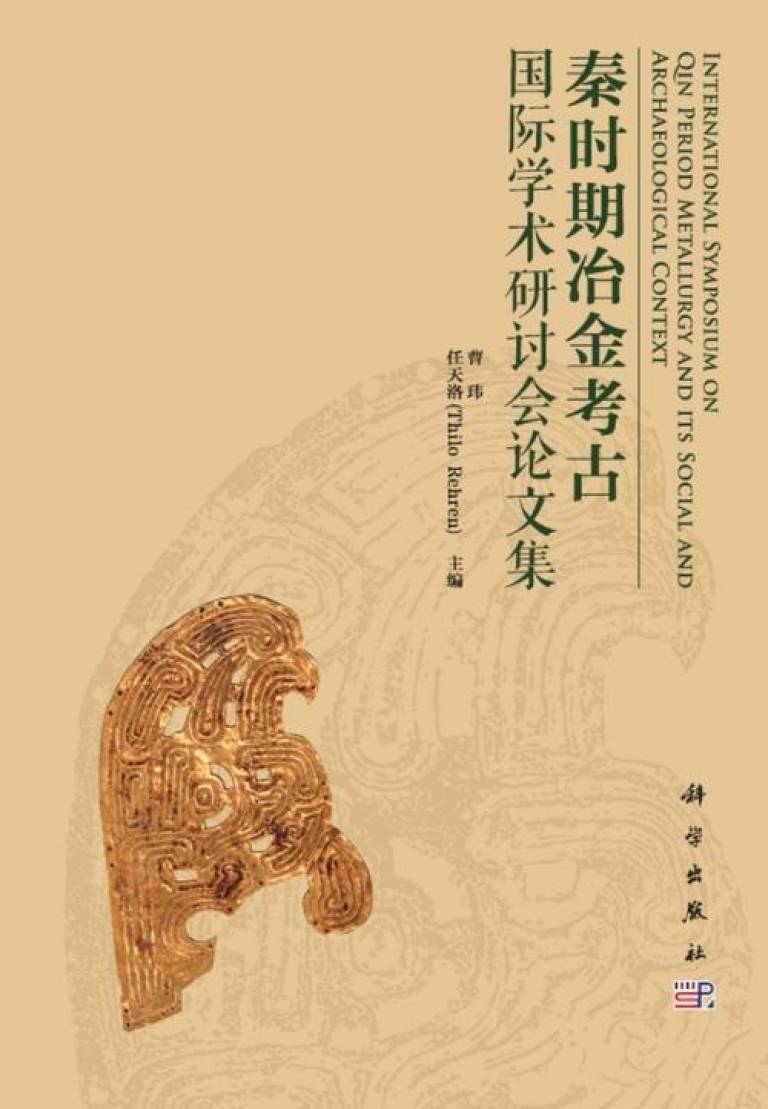金属制品、冶金和秦帝国 / Metals, metallurgy and the Qin Empire
16 December 2014
(scroll down for English version) 在这个博客里面,我们谈了很多有关秦兵马俑所配备的很多类型的青铜兵器,同时通过多学科的研究获取了青铜兵器所蕴涵的大量的有关秦社会与技术方面的信息。除了在我的博士研究和中英合作研究中所关注的大量青铜兵器之外,秦人还制作生产了大量的其它青铜钱币、器皿,生产工具,金银器和铁制工具,并在秦时期广泛使用,有关这些金属制品,我们在这里关注的很少。为了能够向共众公布我们有关青铜兵器的研究成果,能够进一步在大的历史和考古学背景下研究这些兵器,以及进行相应的对比研究,中英联合在2011年4月6-9日在西安召开了秦时期冶金及其社会考古学语境国际学术研讨会,我在这里介绍的正是这次学术研讨会的论文集,是以中文的形式于2014年由科学出版社出版的。 这次学术研讨会聚集了来自世界各地的考古学家、冶金考古学家、科学家和艺术史学家,他们是秦以及同时期金属制品研究的专家,会上讨了新的考古发现和冶金方面最前沿的研究成果,这些研究成果汇集在一起为我们提供了对秦金属制品、冶金及秦帝国时期社会的全面的认识。此文集中共收录上在会上发言的17篇论文,包括对秦青铜、金、银和铁器的考古学分类、金相分析、扫描电镜成像、化学、统计学和空间分析。其中有文章探讨了青铜时代向铁器时代的过渡,也有文章通过汉墓中出土的银盒讨论了当时波斯帝国和秦帝国之间可以存在的远距离技术交流。文集中还有三篇文章分别关注中亚、欧亚草原和东南亚同时期冶金技术的传播。 本论文集拓宽了我们对秦时期冶金研究的视野,同时将秦青铜兵器的研究放入了世界考古的语境中,研究课题超出了秦兵器的手工业生产和帝国后勤,跨越秦帝国的边境,更进一步地探讨技术的传播和社会的变迁。 Metals, metallurgy and the Qin Empire In this blog we talk a lot about the bronze weapons, many functional types, associated to the Qin Terracotta Army, and also about how we extract much information about Qin social and technological issues using multidisciplinary methods.
 In addition to the bronze weapons, which were the
focus of my PhD and of first cooperative project, a large quantity of other
bronze objects (coins, vessels, tools, etc.), gold and silver ornaments, and
iron implements were produced by the Qin people and also used during the Qin
period (700 BC - 210 BC) - but they remains less studied. In order to present our exciting research results,
but also to integrate these bronze weapons in a large historical and
archaeological context or a further comparative study, a symposium was organized
jointly by the Emperor Qin Shihuang's Mausoleum Site Museum and UCL Institute
of Archaeology on 6-9th April 2011 in Xi'an, China. And what I
introduce now is the proceedings of this symposium on the Qin metallurgy and its
social and archaeological context, published in Chinese in 2014.
In addition to the bronze weapons, which were the
focus of my PhD and of first cooperative project, a large quantity of other
bronze objects (coins, vessels, tools, etc.), gold and silver ornaments, and
iron implements were produced by the Qin people and also used during the Qin
period (700 BC - 210 BC) - but they remains less studied. In order to present our exciting research results,
but also to integrate these bronze weapons in a large historical and
archaeological context or a further comparative study, a symposium was organized
jointly by the Emperor Qin Shihuang's Mausoleum Site Museum and UCL Institute
of Archaeology on 6-9th April 2011 in Xi'an, China. And what I
introduce now is the proceedings of this symposium on the Qin metallurgy and its
social and archaeological context, published in Chinese in 2014.
This symposium was an international gathering of leading archaeologists, archaeometallurgists, scientists, and art historians on Qin and other world-wide contemporary metallurgy in which the new archaeological discoveries and the cutting-edge research achievements were integrated to provide a panoramic view of metal, metallurgy and Qin Empire. Altogether 17 papers presented at the symposium are included in this volume, covering archaeological classification, metallurgical analysis, SEM imaging, chemical analysis, statistical and spatial study on the Qin bronze, gold, silver and iron objects. A discussion also took place on the transition from the Bronze Age to Iron Age during the Qin period, and also on the potential far distance communication between the Persian Empire and Qin Empire based the silver boxes found in a Han tomb in China. There are three papers focusing on the technology transfer between China and Central Asia, Eurasia, and Southeast Asia during this period.
This volume broadened our view of Qin period metallurgy and helped us place the Qin bronze weapons research in a world wide social and archaeological context. This is leading us to tackle more research questions and potential issues going from craft organisation and imperial logistics to technological transfer and social changes within or beyond the borders of the Qin Empire.
Xiuzhen Janice Li is a Senior Archaeologist at the Emperor Qin Shihuang's Mausoleum Site Museum, China.
 Close
Close

